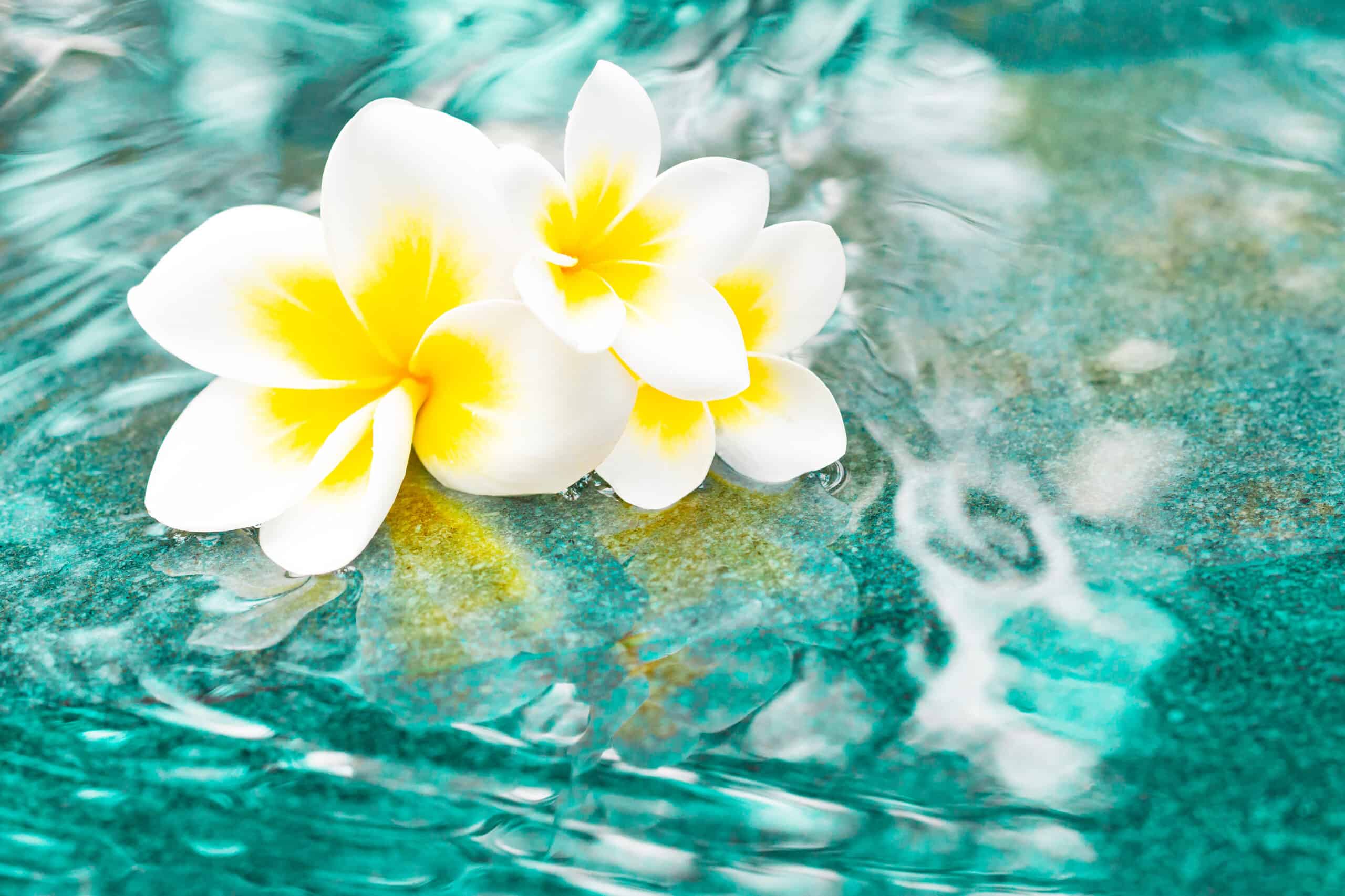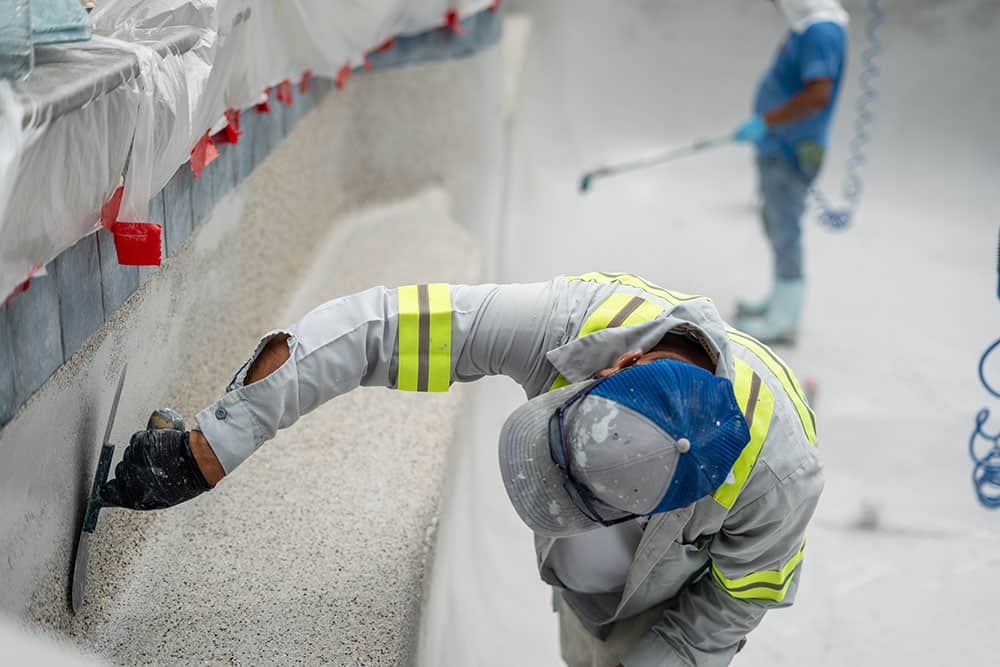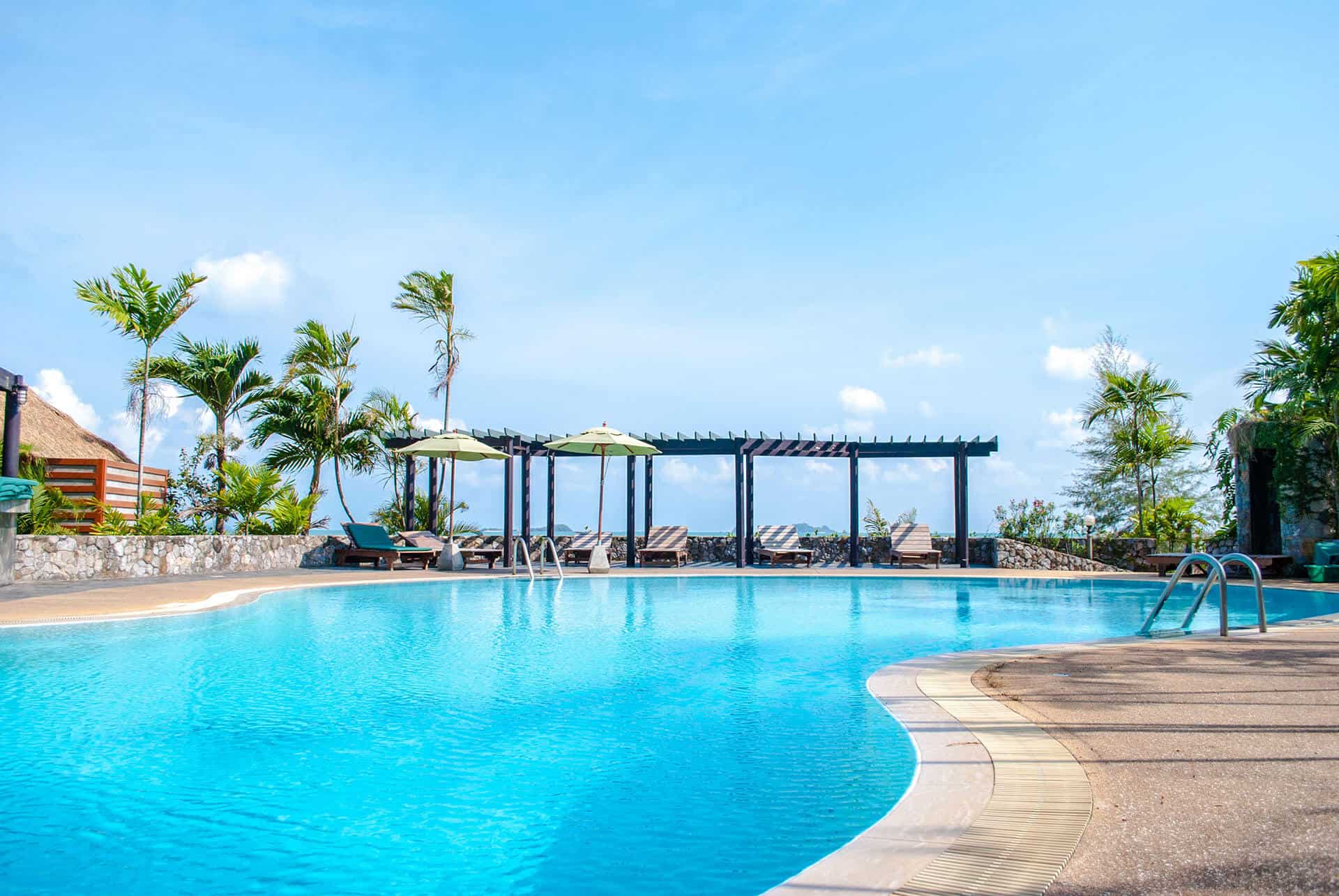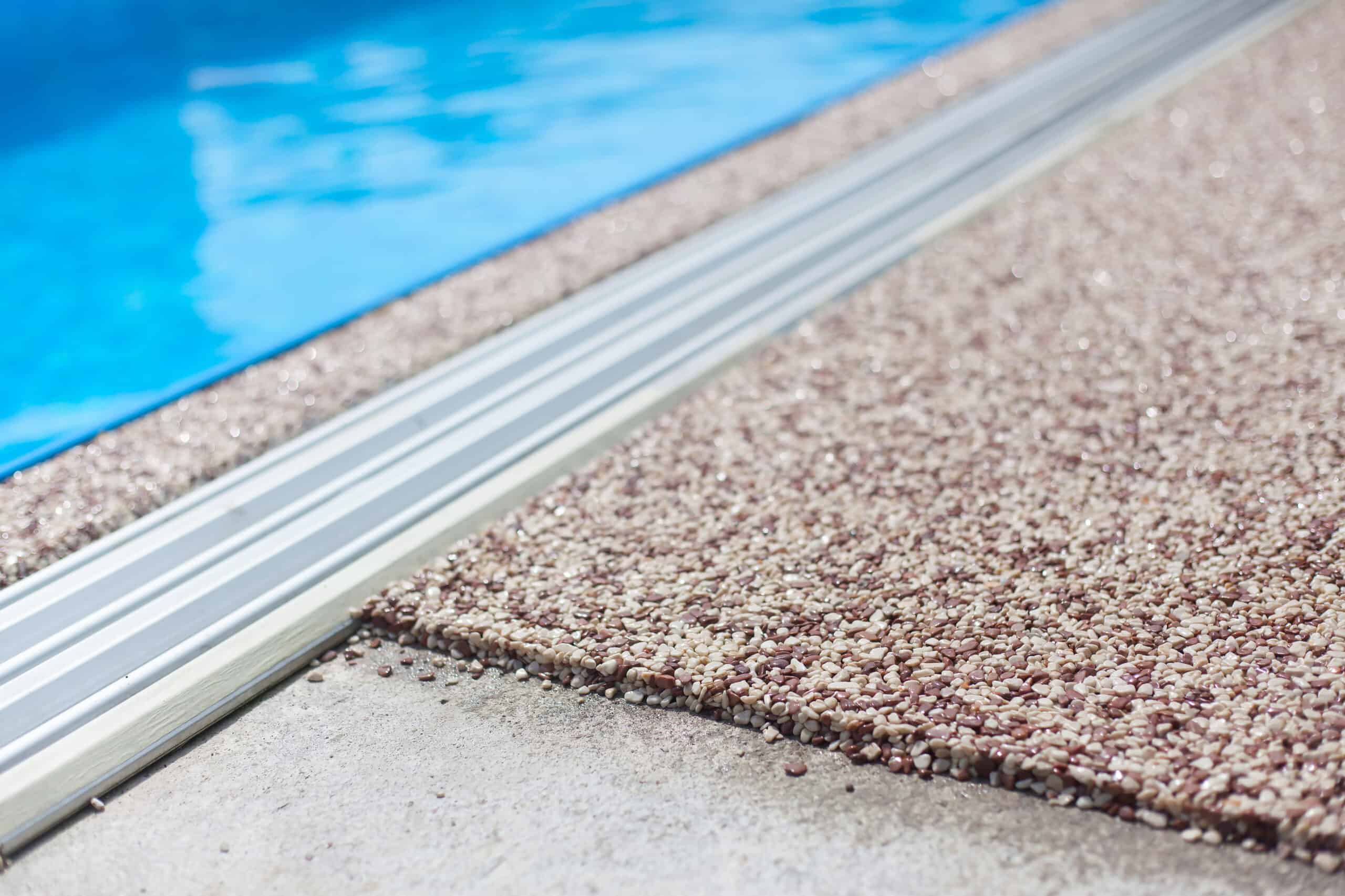Pebblecrete Resurfacing FAQs
Have questions about Pebblecrete or the pool resurface process? Check out our Frequently Asked Questions about Pebblecrete pools. If your question isn’t answered here however, feel free to give our friendly team a call; we’re here for you, every step of the process.
Resurfacing with Pebblecrete involves applying a special blend of cement and fine pebbles to rejuvenate the pool’s surface, enhancing both its look and durability.
The price for resurfacing with Pebblecrete varies. Smaller pools usually cost less than larger pools, although factors like the pool shape, design and surface details influence the final cost. The easiest way to know exactly what your Pebblecrete pool resurfacing cost will be is to request a free Pebblecrete resurfacing quote from our team.
Resurfacing is essential to maintain your pool’s condition, especially as it ages. It prevents the deterioration of the pool surface, which can lead to more complex and expensive repairs if ignored.
A lot of people ask us how Pebblecrete compares to concrete when it comes to pool surfacing and resurfacing. Pebblecrete, though more expensive than concrete, offers a unique aesthetic and long-lasting durability.
Concrete, while less costly, may require more frequent maintenance to prevent algae growth. Pebblecrete also looks more visually appealing than concrete for a pool resurface option. These factors make Pebblecrete a popular pool resurface option for Brisbane pools.
The texture of Pebblecrete offers a less-slippery surface around your pool, which can help to prevent the risk of slipping when walking around your pool area, especially when the surface is wet. This makes Pebblecrete pools a safer choice than some of the other options for your pool resurface project.
While Pebblecrete pools look expensive and high-end, Pebblecrete surface is actually a cost-effective solution. Pebblecrete looks great and improves your overall outdoor aesthetic, which offers great value for money and easy maintenance.






